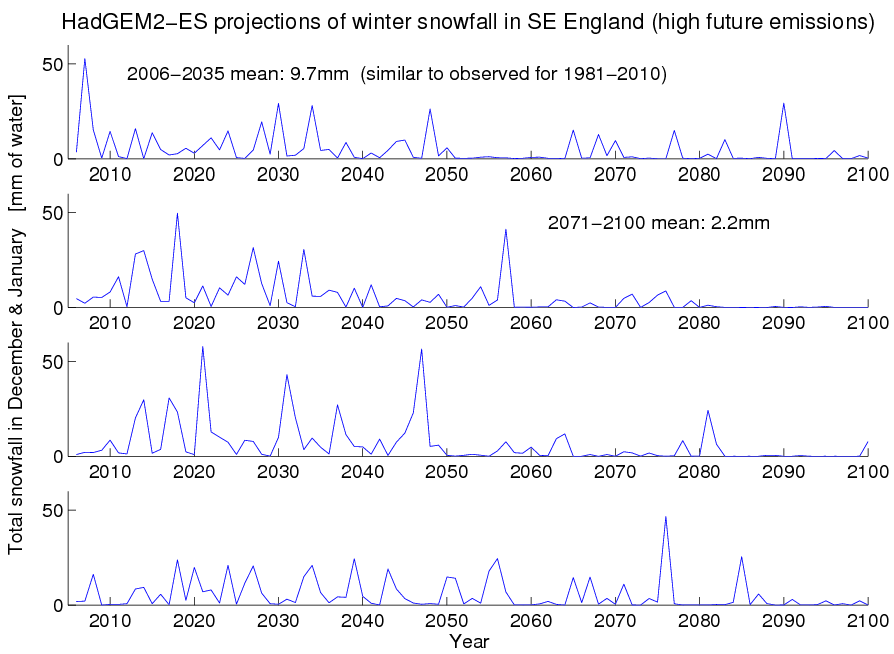It’s December, which means the usual discussion as to whether or not it will be a white Christmas. You can even bet on it. But, how might these odds change in future? Are children going to know what snow is?
As a bit of fun, the figure below shows the total snowfall in December and January in south-east England in 4 realisations of the HadGEM2-ES climate model, assuming high future emissions (RCP8.5).
At present, the model suggests an average of around 10mm of snow per year, expressed as the quantity of water after melting, but the snowfall is very irregular. This is in pretty good agreement with the recent observed average (around 8-10mm per year) from the University of Reading weather station (data provided by Roger Brugge).
For the future, we see an overall decline in snow amount, but there are still occasional years with significant snowfalls, even at the end of the century.
So, you can safely bet on getting snow in future, though the chances of a white Christmas will probably diminish. Merry Christmas!

we see an overall decline in snow amount, “but” there are still “occasional years with significant snowfalls”, even at the end of the century.
So, you can safely bet on getting snow in future, though the chances of a white Christmas will “probably” diminish.
Now there is a forecast that “will certainly” come true…
no buts. mights, could be’s or probably’s in my statement.
And Paul O’Gorman found that heavy snowfalls decline at a reduced rate compared with average snowfall:
http://www.mit.edu/~pog/src/ogorman_snowfall_2014.pdf